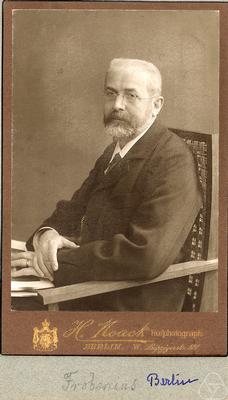Cayley–Hamilton theorem
Cayley–Hamilton theorem is a fundamental statement in linear algebra which asserts that every square matrix over a commutative ring satisfies its own characteristic equation. Named after the mathematicians Arthur Cayley and William Rowan Hamilton, the theorem has significant implications in various areas of mathematics, including matrix theory, eigenvalues and eigenvectors analysis, and the development of polynomial functions related to matrices.
Statement of the Theorem[edit | edit source]
The Cayley–Hamilton theorem can be formally stated as follows: Given an n×n square matrix A over a commutative ring, if p(λ) = det(A - λI) is the characteristic polynomial of A, where λ is a scalar, I is the n×n identity matrix, and det denotes the determinant, then p(A) = 0. Here, 0 denotes the zero matrix of the same size as A, and p(A) is obtained by substituting the matrix A into the polynomial p.
Proof and Implications[edit | edit source]
The proof of the Cayley–Hamilton theorem involves the use of the adjugate matrix and properties of the determinant. It shows that by substituting the matrix A into its characteristic polynomial, one indeed obtains the zero matrix. This result is surprising to many, as it implies that matrices can, in a sense, be solutions to their own characteristic equations.
The implications of the Cayley–Hamilton theorem are vast. It provides a method to compute the powers of matrices and the inverse of matrices (when they exist) using the coefficients of the characteristic polynomial. This is particularly useful in solving systems of linear equations, analyzing linear dynamical systems, and in the field of control theory.
Applications[edit | edit source]
One of the key applications of the Cayley–Hamilton theorem is in the computation of matrix functions, such as the matrix exponential. This is crucial in solving systems of linear differential equations, which appear frequently in physics and engineering. Additionally, the theorem aids in simplifying expressions involving matrices, thereby making certain calculations more tractable.
See Also[edit | edit source]
Further Reading[edit | edit source]
While this article provides an overview of the Cayley–Hamilton theorem, readers interested in a deeper understanding may explore topics in linear algebra that discuss the theorem's proof, its implications, and applications in more detail.
Search WikiMD
Ad.Tired of being Overweight? Try W8MD's physician weight loss program.
Semaglutide (Ozempic / Wegovy and Tirzepatide (Mounjaro / Zepbound) available.
Advertise on WikiMD
|
WikiMD's Wellness Encyclopedia |
| Let Food Be Thy Medicine Medicine Thy Food - Hippocrates |
Translate this page: - East Asian
中文,
日本,
한국어,
South Asian
हिन्दी,
தமிழ்,
తెలుగు,
Urdu,
ಕನ್ನಡ,
Southeast Asian
Indonesian,
Vietnamese,
Thai,
မြန်မာဘာသာ,
বাংলা
European
español,
Deutsch,
français,
Greek,
português do Brasil,
polski,
română,
русский,
Nederlands,
norsk,
svenska,
suomi,
Italian
Middle Eastern & African
عربى,
Turkish,
Persian,
Hebrew,
Afrikaans,
isiZulu,
Kiswahili,
Other
Bulgarian,
Hungarian,
Czech,
Swedish,
മലയാളം,
मराठी,
ਪੰਜਾਬੀ,
ગુજરાતી,
Portuguese,
Ukrainian
Medical Disclaimer: WikiMD is not a substitute for professional medical advice. The information on WikiMD is provided as an information resource only, may be incorrect, outdated or misleading, and is not to be used or relied on for any diagnostic or treatment purposes. Please consult your health care provider before making any healthcare decisions or for guidance about a specific medical condition. WikiMD expressly disclaims responsibility, and shall have no liability, for any damages, loss, injury, or liability whatsoever suffered as a result of your reliance on the information contained in this site. By visiting this site you agree to the foregoing terms and conditions, which may from time to time be changed or supplemented by WikiMD. If you do not agree to the foregoing terms and conditions, you should not enter or use this site. See full disclaimer.
Credits:Most images are courtesy of Wikimedia commons, and templates Wikipedia, licensed under CC BY SA or similar.
Contributors: Prab R. Tumpati, MD



